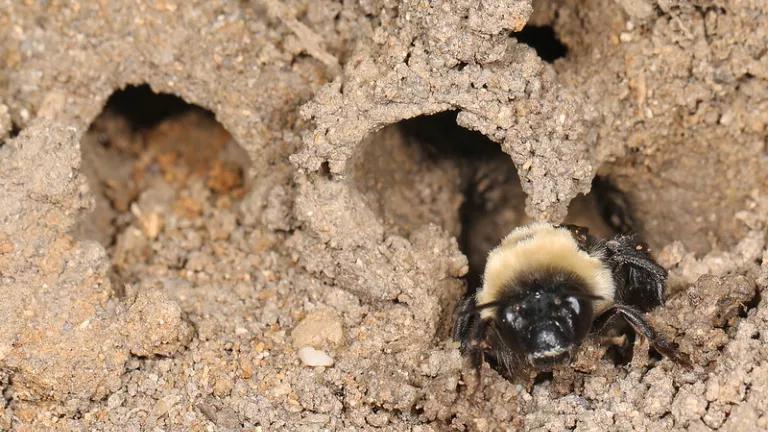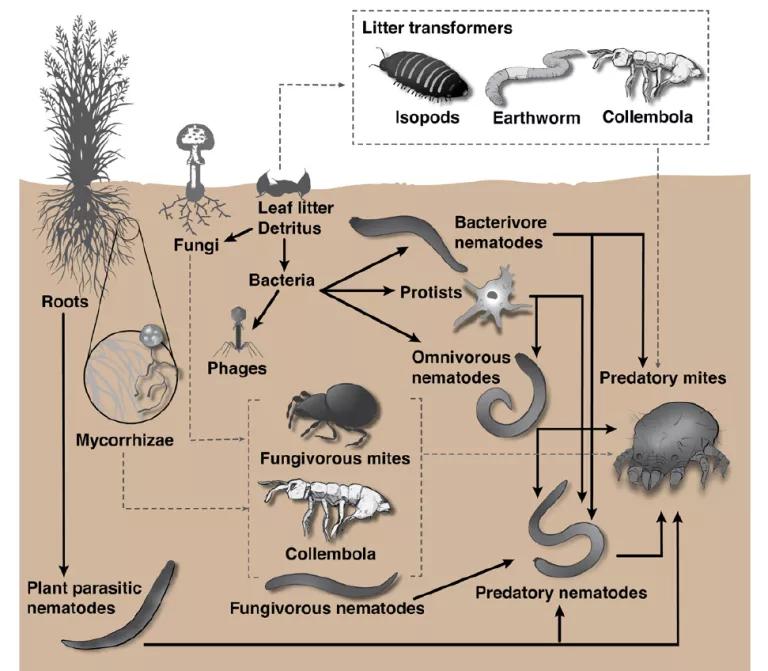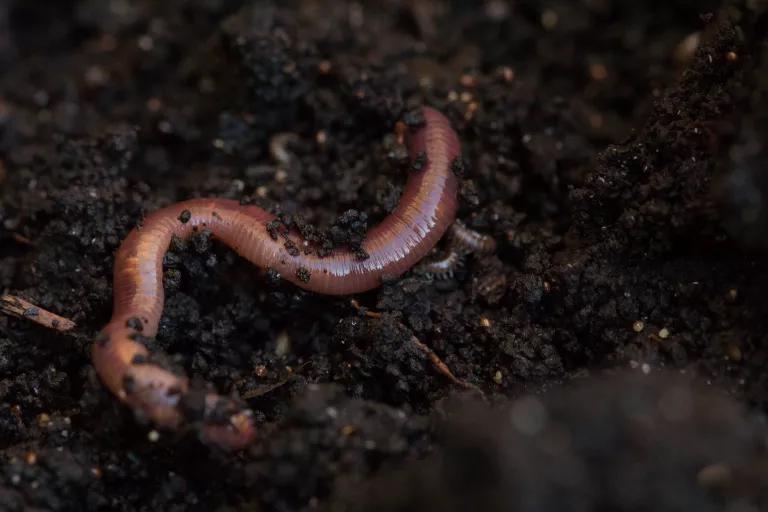How Neonics Can Harm Soil Health and Soil Biodiversity
This World Soil Day, let's acknowledge the effects that neonic pesticides can have on soil health and biodiversity, and the farms that depend on them.

Large invertebrates like ground dwelling bees are an important part of soil biodiversity, and may be under threat from overapplication of neonics
Neonicotinoids or “neonics” are the world’s most commonly used insecticides, linked to mass losses of bees and other pollinators, threats to human health, and declines in ecosystem functioning. While neonics’ harms to pollinators are widely known, their damaging impact on the complex network of organisms beneath our feet has generally been overlooked. This World Soil Day, it’s important to acknowledge the far-reaching effects that neonic pesticides can have on soil health and biodiversity, and the farms and agricultural systems that depend on them.
To understand the impact of neonics on soil biodiversity, it’s important to understand what soil biodiversity is. Beneath our feet is a teeming network of organisms spanning sizes from micrometers to meters, each playing an important role in a complex interactive network that is the basis of healthy soils. This network includes microscopic creatures such as protozoa and bacteria, more visible creatures such as springtails and earthworms, and larger organisms that only spent part of their time in the soil like ground-dwelling bees. These biological networks are what build soil structure and enable the soil to absorb and hold water, break down plant residues to liberate the nutrients inside for crops, and control pest and disease populations.

The soil food web is made up of many different types of organisms, all of which are interconnected and allow the soil to carry out its functions.
Taken from CDFA Report "Soil Biodiversity in California Agriculture: Framework and Indicators for Soil Health Assessment" Credit: Javier A Ceja-Navarro.
All of these creatures are connected through the soil food web, with predators like protozoa and nematodes preying on smaller organisms such as bacteria and mites. These predators play a vital role in maintaining the soil biodiversity network—ensuring that pest and disease populations stay under control, and releasing nutrients back into the soil. They are also one of the members of the soil food web most at risk from neonics.
Neonics’ negative impacts are particularly pronounced on soil invertebrates, especially soil predators—this includes insects, nematodes and protists—higher up in the food web as well as decomposers such as springtails and earthworms. Organisms lower on the food chain can also be affected. After neonic application, scientists noted a decline in potentially beneficial soil bacteria that are important for plant growth and improve soil fertility, though they also observed an increase in other bacterial populations as they worked to break down the pesticide. When the entire soil food web is taken into account, neonicotinoid application can impair microbial functioning—including the breakdown of plant residues, and the provision of nitrogen for crop growth—but it’s also clear that more research into neonic impacts on the soil food web is desperately needed.
Because soil food webs are so complex, they can also be resilient—but it is uncertain to what degree they can continue to absorb the impacts of pesticides before these webs begin to fray. By attacking a key mechanism that keeps pest populations under control—predators—neonicotinoids may reduce healthy soil’s ability to suppress pest and disease populations naturally in the long term, increasing the need for neonic application and keeping farmers running on the pesticide treadmill. This places neonics at odds with pest management strategies like integrated or sustainable pest management that seek to boost the soil’s ability to suppress pests and diseases on its own.

A worm in a vermicomposting bin. Several different species of worms such as Canadian nightcrawlers, red wigglers or earthworms are excellent at decomposing organic waste products and turning food scraps, paper or yard waste into compost as beneficial soil amendments.
If we don’t work to tackle the immediate threats that soil organisms face—such as overapplication of neonic pesticides—we weaken the ability of those soils to respond to more long term changes such as climate change. And since healthy soils depend on soil biodiversity, we make it harder for farmers to depend on the soil to increase the resilience and long term sustainability of farms. Luckily, there are steps that can be taken to reduce the impacts of neonics on soil biodiversity. Policies such as the Birds and Bees Act in New York could go a long way by reducing the amount of neonics applied in wasteful seed coatings. Incentivizing sustainable farming practices such as cover cropping and regenerative farming can provide a boost to soil biodiversity. Soil health depends on soil biodiversity—the complex living network that purifies our water, provides nutrients to crops and supports our farms—and neonics pose a serious threat to several key members of that network.




